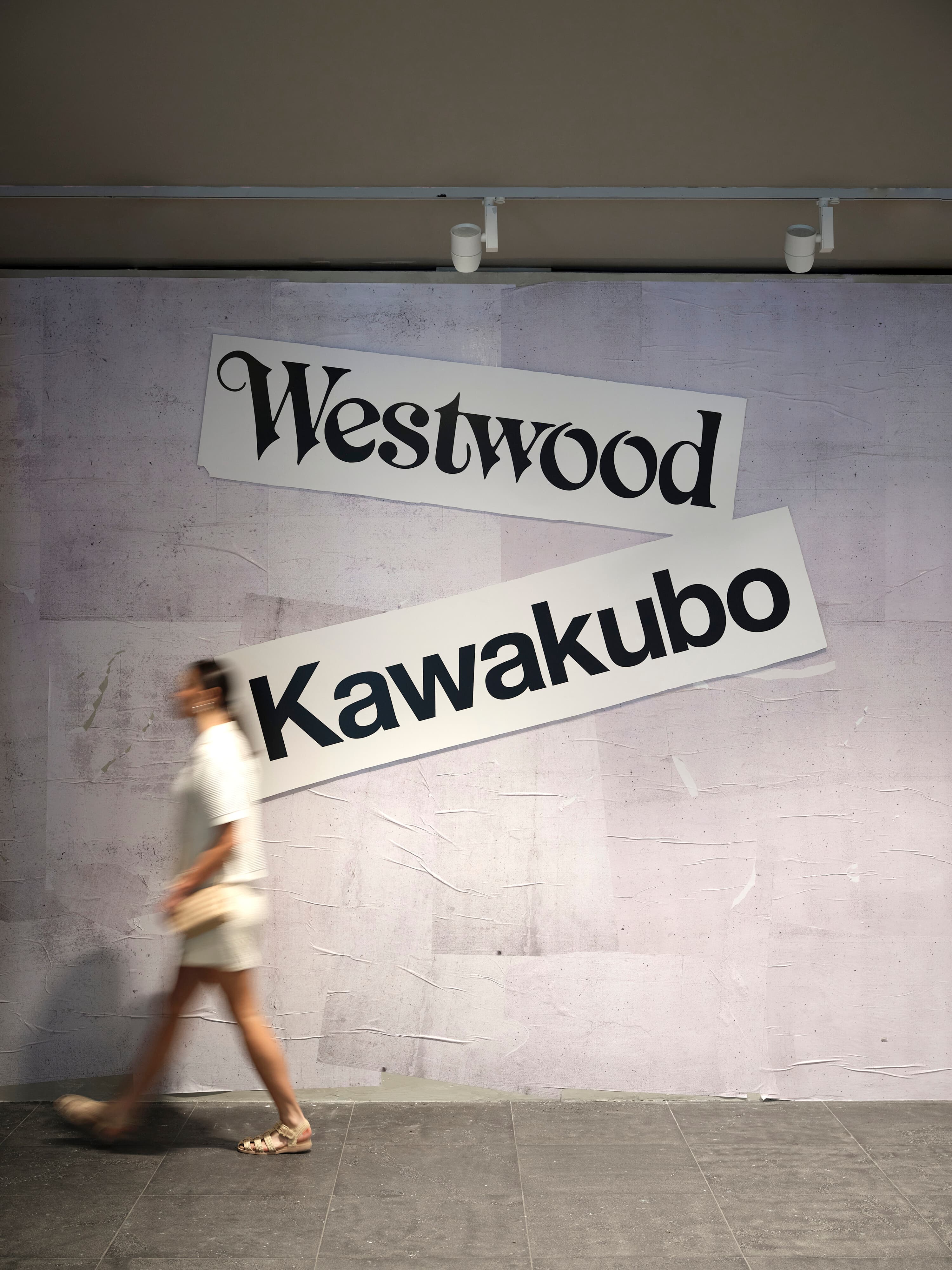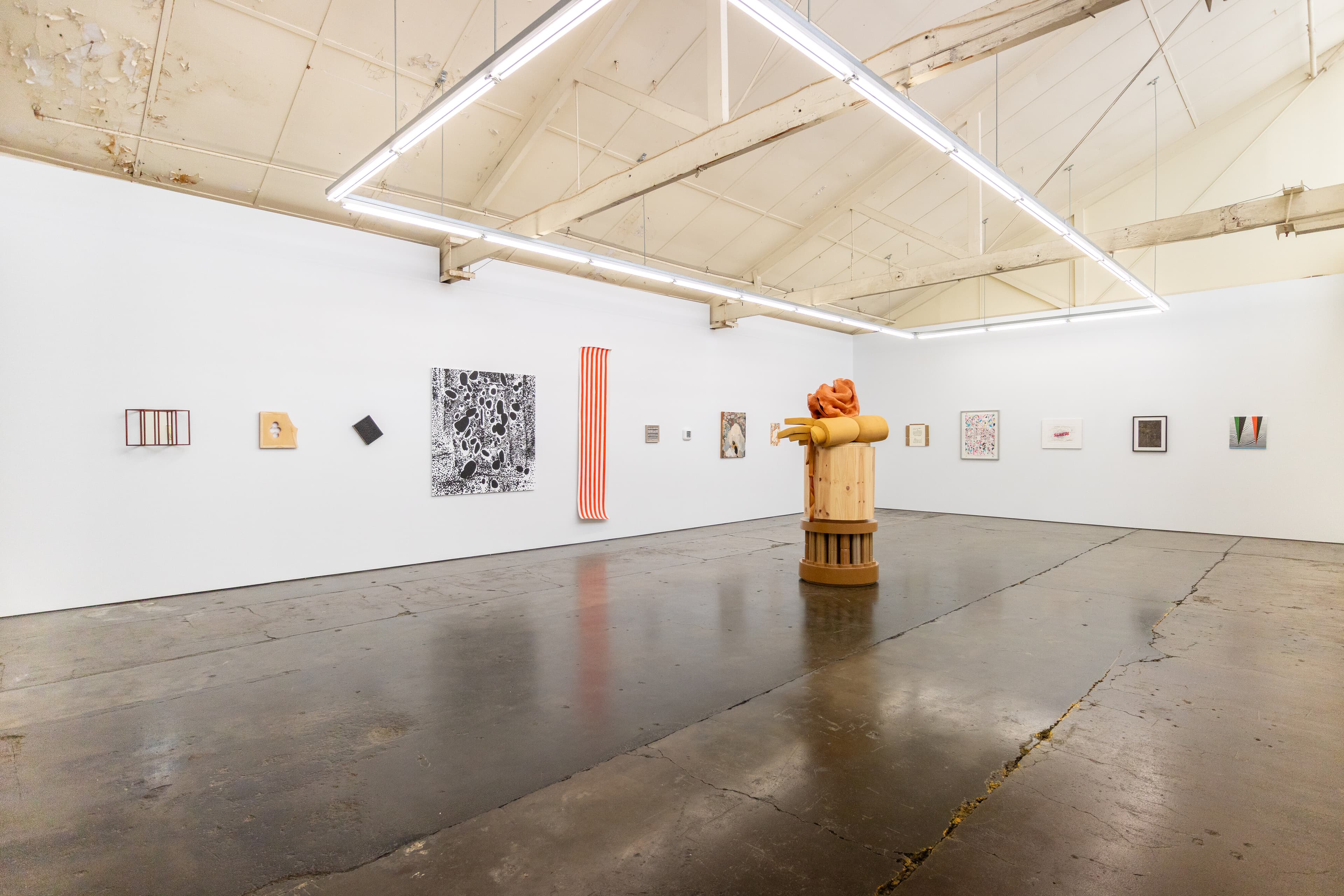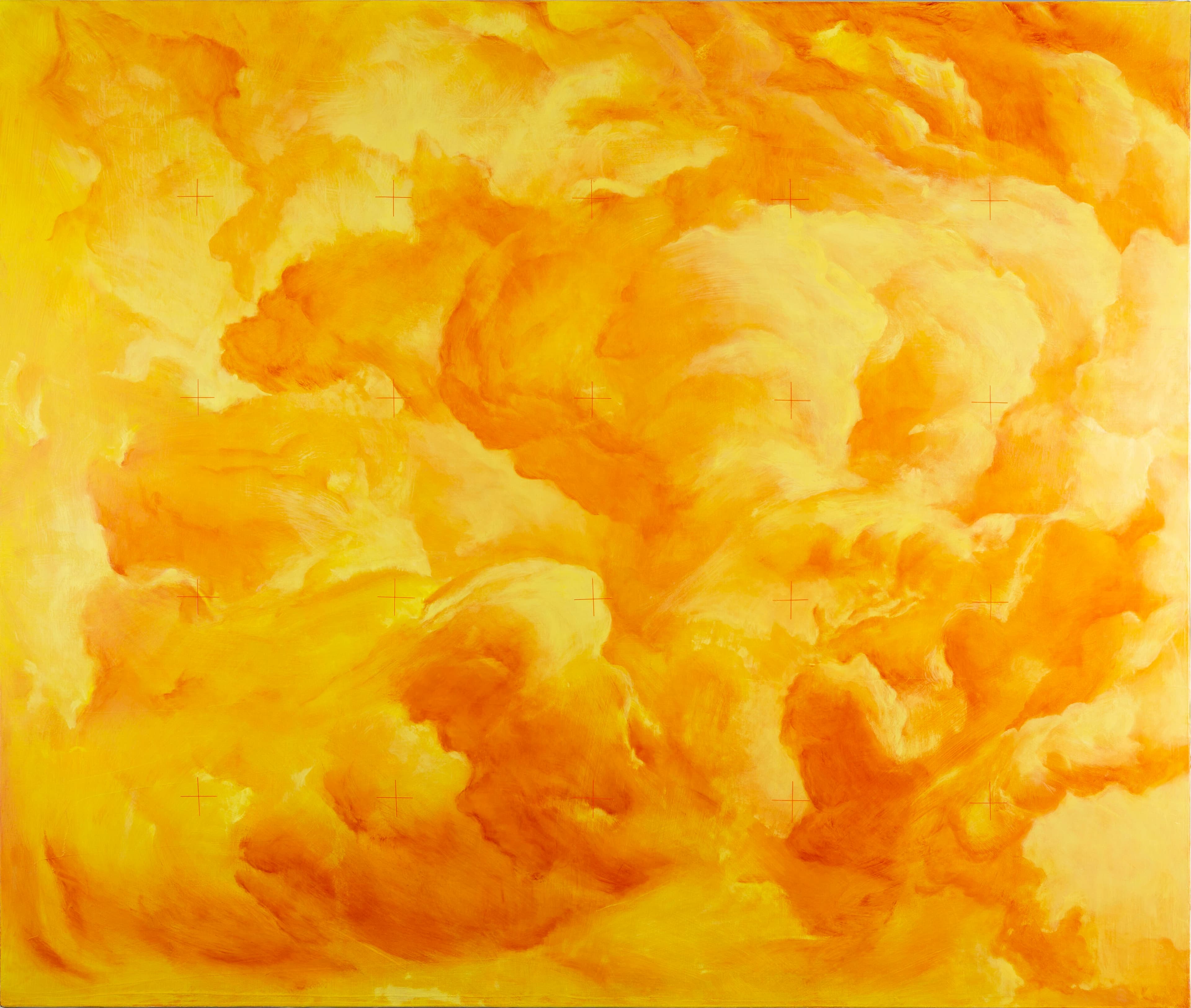Kaylene Whiskey, Kaylene TV, 2023, mixed media installation. Commissioned by the Biennale of Sydney and the Fondation Cartier pour l’art contemporain with generous assistance from the Australian Government through Creative Australia, its principal arts investment and advisory body. Courtesy the artist, Iwantja Arts and Roslyn Oxley9 Gallery. 24th Biennale of Sydney, Ten Thousand Suns, White Bay Power Station. Photo by Daniel Boud.
The 24th Biennale of Sydney: Ten Thousand Suns
Anastasia Murney
Curators Cosmin Costinaș and Inti Guerrero stake out carnival as central to the thematic framework of Ten Thousand Suns, describing “how carnival traditions, such as music, dance and regalia, can be a form of resistance and a way of rallying against oppression.” One of the most influential accounts of carnival comes from Russian literary theorist Mikhail Bakhtin’s book on the French Renaissance writer François Rabelais, published in English in 1968. In Rabelais and His World, Bakhtin argues that Rabelais is indebted to the popular and folkloric rituals of the Middle Ages. As a historical phenomenon, medieval European carnivals were filled with laughter, feasting, and crude humour. These were moments of rupture and renewal, involving a reversal of societal roles; the slave would be crowned king while the king was forced to dress as a pauper.
It is certainly possible to find the subversive impulse of the Rabelaisian carnival in Ten Thousand Suns. In the window of UNSW Galleries, there is a giant butt-plug, part of Maputiti Nonga (Evil Ass Dreaming) (2024) by Yangamini, a collective of Tiwi sistagirls. The work is comic and playful, but also deadly serious. The butt-plug is intended to block the exploitative spread of oil and gas pipelines, from Darwin, under the Timor Sea, to the Tiwi Islands—the “evil ass” of settler-colonialism. Over at White Bay Power Station, Dylan Mooney’s enormous portrait of South Sea Islander dancer and activist Malcolm Cole is the centrepiece of the exhibition. Cole opened the 1988 Sydney Gay and Lesbian Mardi Gras Parade dressed in colonial regalia as Captain Cook, with a group of white convicts towing his float down the street. It was a perfect carnivalesque inversion of the Bicentennial celebrations, which re-enacted the invasion of the First Fleet just one month prior.
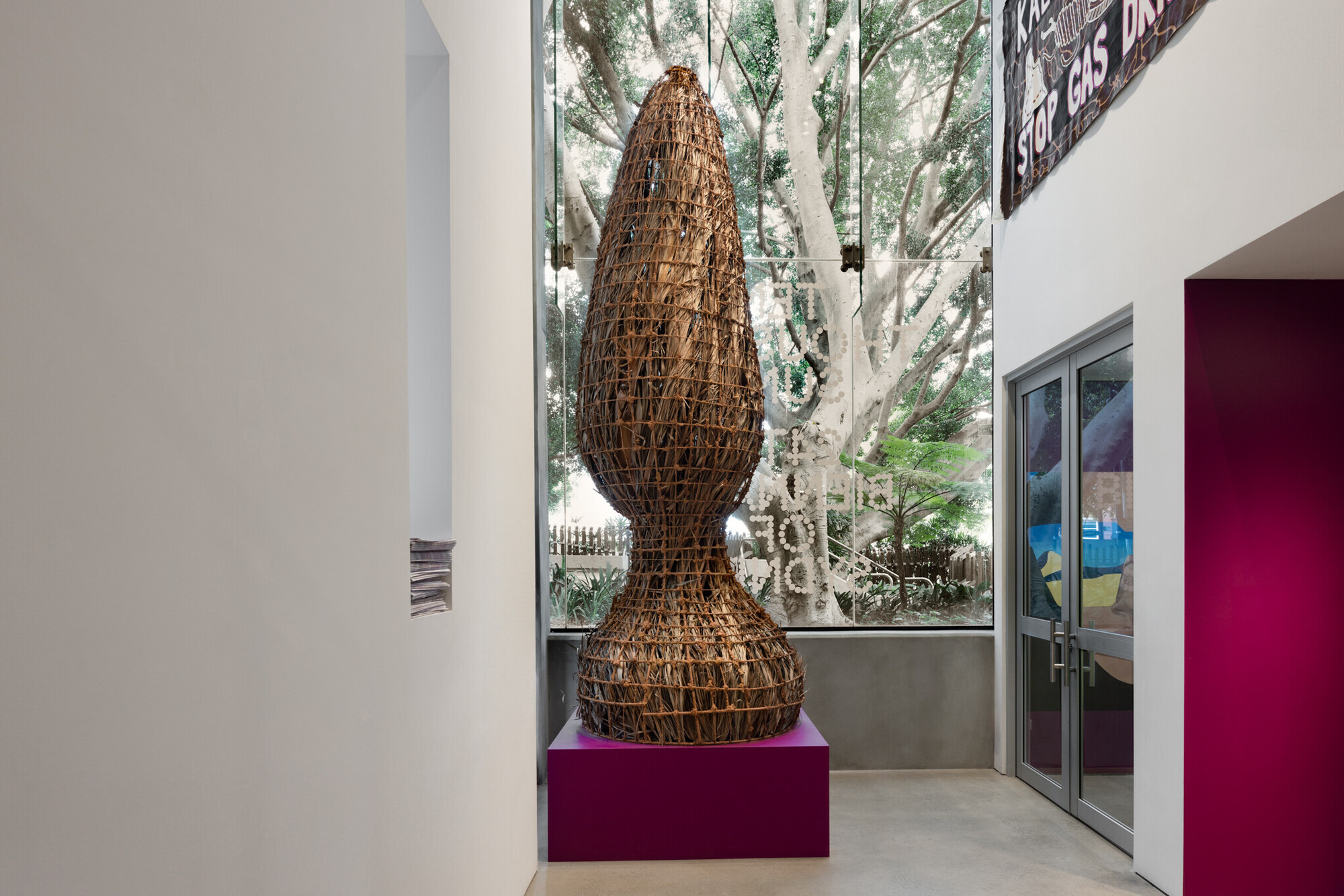
Installation view, 24th Biennale of Sydney, Ten Thousand Suns, UNSW Galleries, featuring art by Yangamini, photo by Jacquie Manning.
From a curatorial perspective, the carnival motif is convenient because it offers a large and kaleidoscopic remit, lending itself to a sprawling, colourful Biennale with an undercurrent of resistance to the status quo. But viewing the carnival(s) of Ten Thousand Suns through the lens of Bakhtin, Rabelais, and the European tradition is too restrictive. In the last room of the exhibition at the Art Gallery of NSW, Big Chief Demond Melancon’s Africa (2011) and Spirit of Red Cloud and Sitting Bull (2013) consist of intricate fabric panels set with glass beads and rhinestones, depicting Native American Chiefs and warriors. In antebellum Louisiana, French settlers and plantation owners founded some of the first Mardi Gras festivals in New Orleans, clinging to European traditions of feasting and comic masquerade. However, Melancon represents a more elusive “counter” carnival, known as Black Masking, dating back to the 1800s. It’s a ritual that makes visible the historical solidarities between Native American people and enslaved Africans, who conspired and collaborated against the settlers.
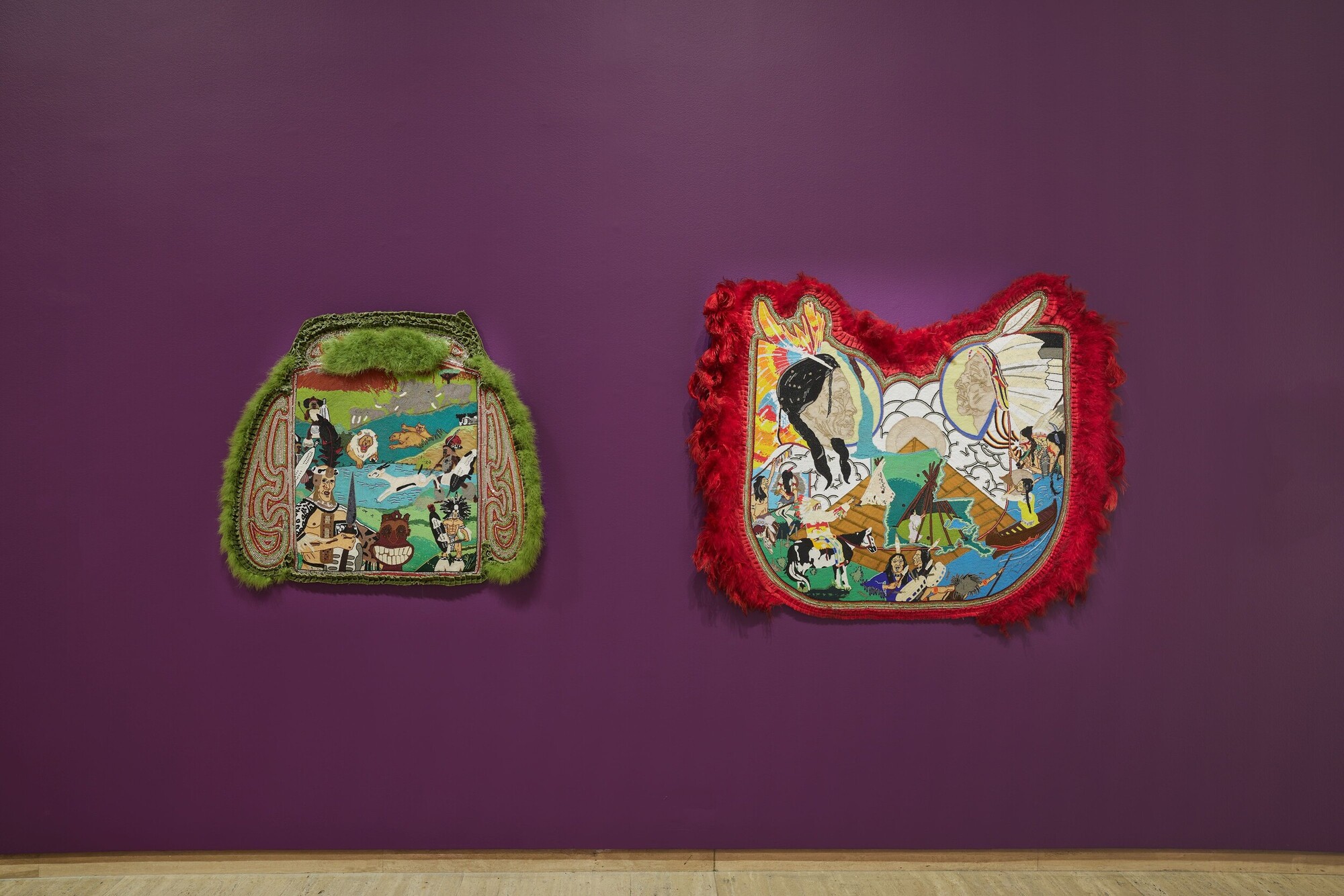
Installation view, Ten Thousand Suns, 24th Biennale of Sydney 2024, Art Gallery of New South Wales, featuring art by Big Chief Demond Melancon, photo © Art Gallery of New South Wales, Christopher Snee.
The Caribbean carnival tradition is most pronounced at White Bay Power Station. The exhibition features video documentation of Trinidadian artist Peter Minshall’s The Adoration of Hiroshima (1985), a spectacular performance that took place at an anti-nuclear peace march in Washington DC on the 40th anniversary of the bombing of Hiroshima. Amongst thousands of participants, Madame Hiroshima is a haunting, grotesque figure, decorated with a towering mushroom cloud. Because the carnival rests on inversions, death, destruction, and enslavement are often inscribed into these festive expressions. Upstairs, for instance, Özgür Kar’s languorous skeleton is like a hollowed-out court jester, standing opposite the effervescent mural of Malcolm Cole.
Other works, such as Alberto Pitto’s cascading Afro-Bahian prints, allude to the passage from plantation to carnival, though this remains somewhat subtle and underarticulated. On this note, I can’t help wishing for more live dance and performance to bring the carnival to life, elaborating its essentially embodied and affective textures. Yes, there’s an adjacent live music program, but these ticketed events feel detached from the artworks’ thematising carnival.
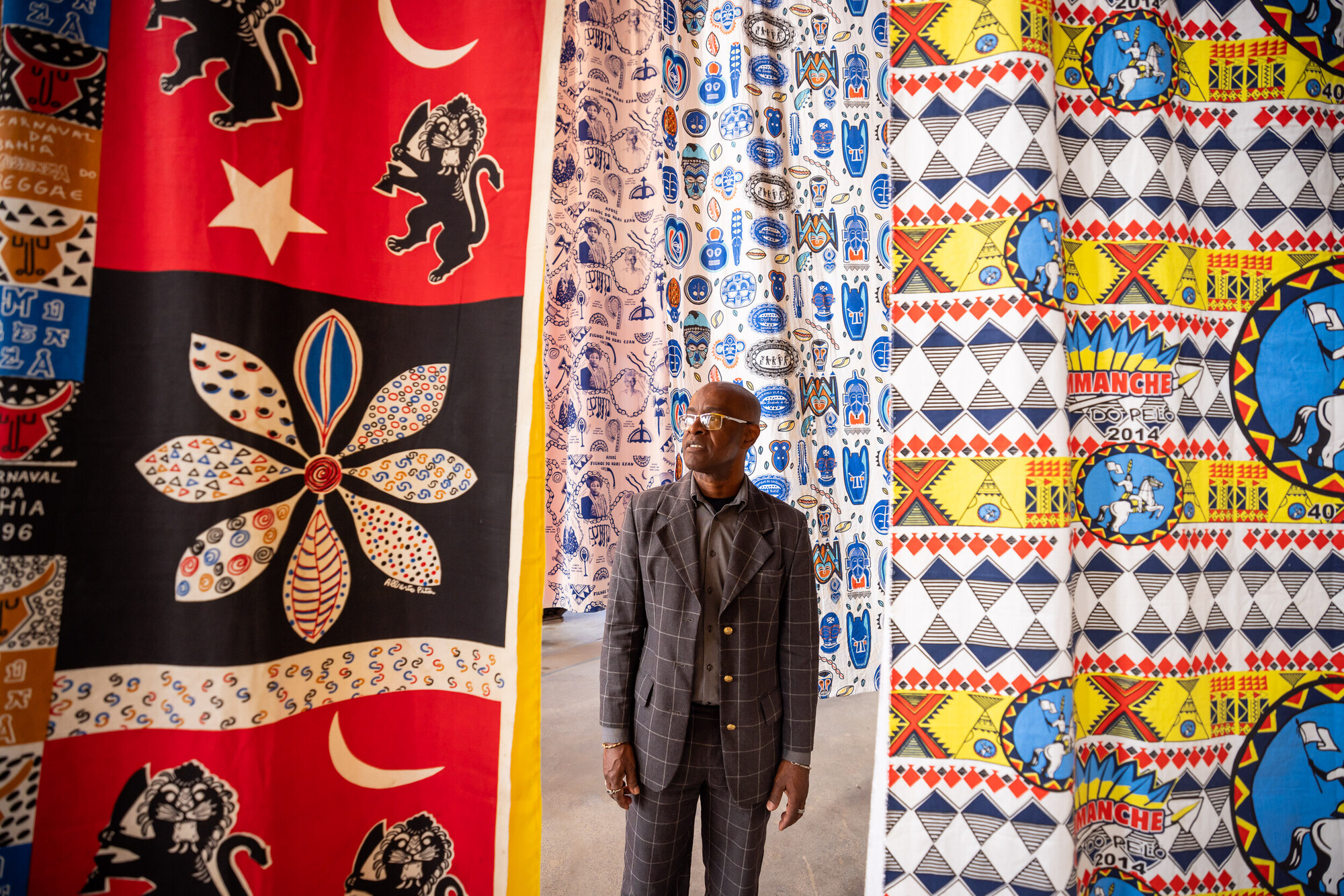
Alberto Pitta, Installation view. Commissioned by the Biennale of Sydney with assistance from The Fundação Nacionalde Artes, 24th Biennale of Sydney, Ten Thousand Suns, White Bay Power Station. Photo by Daniel Boud.
In a short piece (republished in the Biennale catalogue), anthropologist Eric Michaels reflects on the 1988 Gay and Lesbian Mardi Gras and glimpses the “real potential” of the event when authorities moved to reclaim the streets after midnight, forcing disgruntled revellers to relinquish their freedoms. Critics of the carnival-as-resistance argue that it is not a genuine moment of upheaval, but a tactic authorities use to relieve pressure. Let the oppressed blow off steam and the revolution will be deferred. In Ten Thousand Suns, there is a risk of flattening the complex dimensions of carnival into an image of generic celebration. But there’s a difference between a carnival and a funhouse. Here, I am thinking of the kitsch experience of posing with the famous figures inside Kaylene Whiskey’s life-size diorama. Gentrification and commodification have all but neutralised the political potential of Mardi Gras carnivals in New Orleans, Trinidad, and Sydney. To find true liberation in the carnival, we have to prolong the subversion for as long as possible.
Anastasia Murney is a writer and teacher living on Gadigal land. She holds a PhD from the University of New South Wales.
